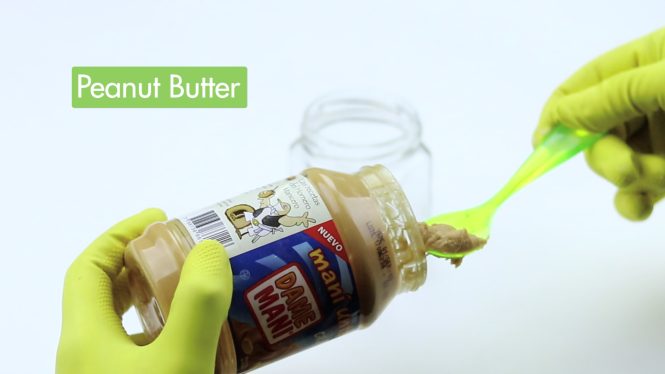

Removing floor sticker residue can be a frustrating task, but with the right approach, it doesn’t have to be. This comprehensive guide details various methods for efficiently eliminating floor sticker residue, from simple solutions to more advanced techniques. We’ll cover everything from understanding the different types of floor surfaces to identifying the best cleaning solutions for sticker residue removal. Whether you’re dealing with a small area or a larger space, this guide will provide you with the knowledge and tools to tackle this common cleaning challenge.
Understanding Floor Sticker Residue: A Comprehensive Overview
Different Types of Floor Surfaces
Different floor surfaces react differently to various cleaning methods. Understanding the material of your flooring is crucial for successful residue removal. Laminate floors, for example, are more susceptible to damage from harsh chemicals, while sealed hardwood floors can handle stronger solutions. Knowing the floor’s composition allows you to select the appropriate cleaning agents and techniques. Proper care and selection of materials are essential, particularly for maintaining the integrity of your floors.
The Importance of Identifying the Sticker Material
The material of the sticker itself greatly impacts the residue removal process. Some stickers are made with pressure-sensitive adhesives that are more easily removed than others. In some cases, the sticker might have a special coating that necessitates specialized cleaning procedures. Understanding these differences can make the removal process faster and more efficient.
Effective Methods for Removing Floor Sticker Residue
Using Mild Detergents and Warm Water
For most sticker residues, a mixture of mild dish soap and warm water works effectively. Apply the solution to the affected area with a soft cloth or sponge, gently scrubbing the area in circular motions. Ensure the mixture is not too harsh to avoid scratching the floor. The heat of the water helps to loosen the adhesive, making the removal process less arduous. Be sure to rinse the area thoroughly with clean water after scrubbing to prevent any residue buildup.
Employing Specialized Cleaning Solutions
If mild detergents aren’t enough, specialized cleaning solutions designed for adhesive removal can be extremely helpful. These solutions are often formulated with stronger chemicals that can loosen and dissolve the adhesive more effectively. Always follow the manufacturer’s instructions carefully when using these products, including appropriate safety precautions and application techniques.
Advanced Techniques for Stubborn Residue
Using a Razor Blade or Plastic Scraper
For stubborn residue that doesn’t yield to simpler methods, a razor blade or plastic scraper can be helpful, but with extreme caution. Gently scrape away the residue, avoiding scratching or damaging the floor surface. Start in a corner or inconspicuous area to test the method first, before applying to the affected spot. Use a soft cloth or sponge to wipe away loose debris and repeat the process, ensuring the surface is cleaned thoroughly.
Applying Heat or Steam
Applying localized heat or steam can soften the adhesive, making it easier to remove. Carefully apply a hair dryer on a low setting, aiming the heat directly at the residue. Alternatively, a steam cleaner may help to soften the adhesive, allowing for easier removal with a scraper. Test in a hidden area before proceeding to a larger area.
Prevention is Key: Avoiding Future Residue
Choosing High-Quality Stickers
One of the most effective ways to avoid sticker residue is to use high-quality stickers that are designed to be easily removed. Look for stickers made with pressure-sensitive adhesives that are known for their low residue characteristics. Avoid stickers that are known to leave residue, in the long run.
Proper Sticker Application Techniques
Following proper application techniques can significantly reduce the likelihood of residue. Make sure the surface is clean and free of dust or debris before applying the sticker. Avoid applying too much pressure, which can cause the adhesive to spread and leave residue.
Dealing with Specific Floor Types
Laminate Floors
For laminate floors, avoid harsh chemicals and abrasive cleaning methods. Use a gentle detergent and warm water solution, and be cautious when using any tools that could scratch the surface. Test any cleaning product or method in a discreet area first.
Hardwood Floors
With sealed hardwood floors, you have more flexibility. Choose a cleaning solution appropriate for your hardwood’s finish, being mindful of the finish to prevent damage. Apply gentle pressure and avoid excessive scrubbing.
Frequently Asked Questions
What are the best cleaning solutions for removing floor sticker residue?
The best cleaning solution for removing floor sticker residue depends on the specific type of sticker, the floor surface, and the severity of the residue. For most cases, a mild detergent and warm water solution works well. However, for stubborn residue, specialized cleaning solutions formulated for adhesive removal might be necessary. Always test a cleaning product in an inconspicuous area of the floor first to avoid accidental damage.
How do I prevent floor sticker residue from forming in the future?
Preventing floor sticker residue begins with choosing high-quality stickers designed for easy removal. Follow the manufacturer’s instructions carefully during application and ensure the floor surface is clean and free of dust or debris before applying the sticker. Applying gentle pressure and avoiding excessive scrubbing during the application process will greatly reduce the chance of residue formation.
In conclusion, removing floor sticker residue requires a multi-faceted approach that considers the material of the sticker, the floor surface, and the cleaning method. By carefully following the steps outlined in this guide, you can effectively eliminate stubborn sticker residue without damaging your floors. If you’re still struggling, don’t hesitate to consult a professional cleaner for specific recommendations. Remember, prevention is key—choosing high-quality stickers and applying them correctly can save you time and effort in the long run. Learn more about sticker application techniques and floor cleaning methods on our website.